Annual Cycle
Ruby-throated Hummingbirds
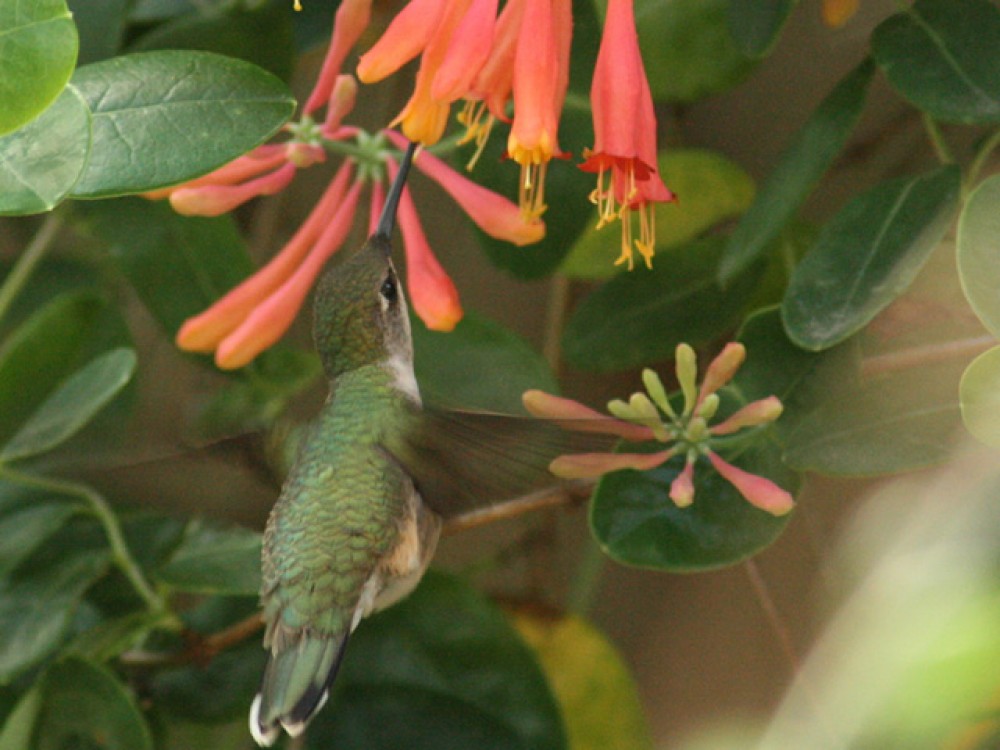
During January, the vast majority of Ruby-throated Hummingbirds are on their wintering grounds in the Southern Hemisphere. They are getting fresh new feathers and molting, but they still need to visit hundreds of flowers every day. Hummingbirds burn energy so fast they often eat 1.5 to 3 times their body weight in food per day.
Photo by Joan Garvey

In February, rubythroats grow restless in response to hormonal changes that are triggered by changing length of daylight. The first birds start migrating north toward the end of February.
Photo by Geri DeBoer
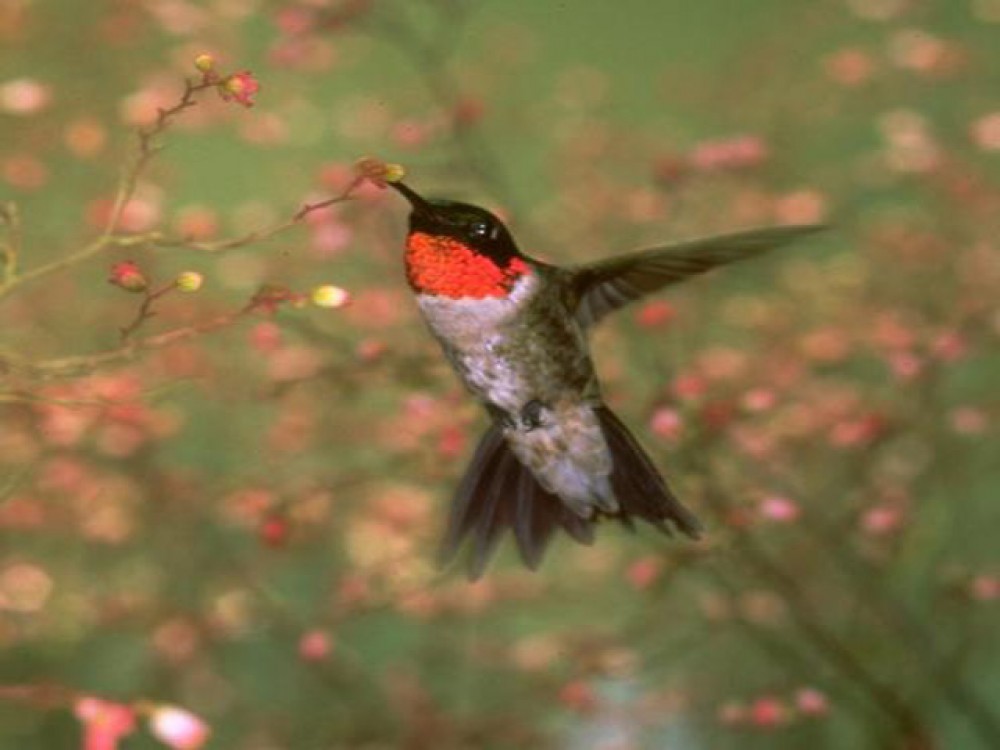
In March, migration is underway. Hummingbirds can't afford to be in too much of a hurry when they return to their breeding range in spring. There has to be food all along the way due to their tiny size and high metabolism. Hummingbirds follow Yellow-bellied Sapsuckers north because those birds drill holes, called sapsucker wells, in trees each spring. These tiny birds cannot survive a day without food, so sap running from the holes is important for Ruby-throated Hummingbirds in early spring.
Photo by Laura Erickson
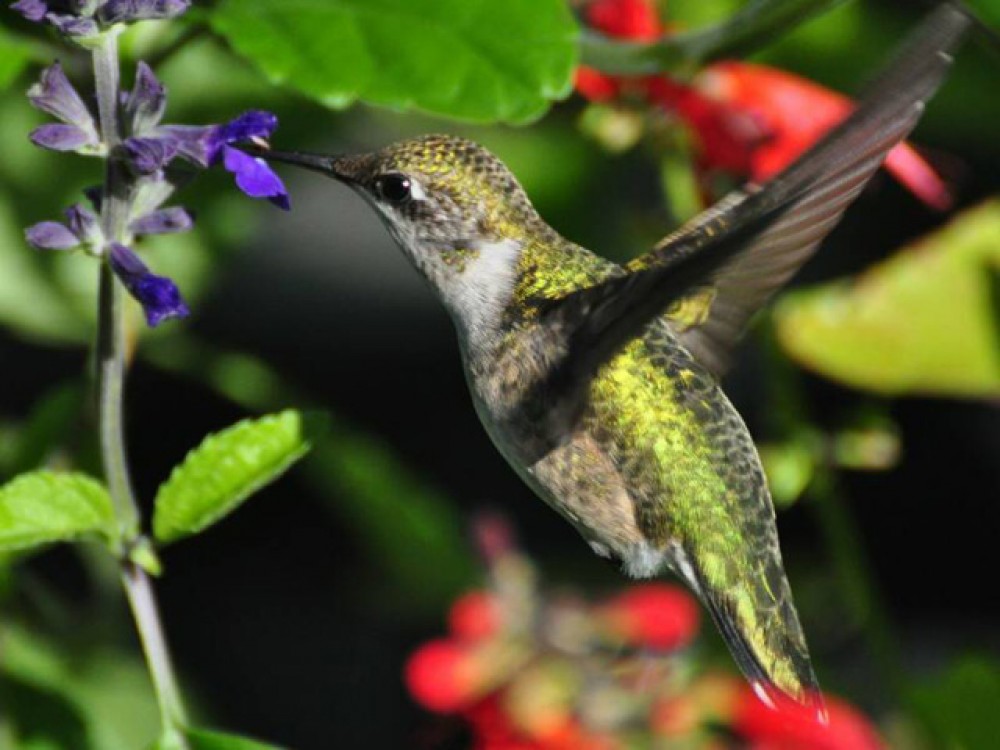
In April, hummingbirds begin to arrive along the Gulf Coast. Males arrive first and establish a territory rich in flowers. They show off with flight displays, diving, dipping and looping to attract a female to their territory. If she likes his display, she will mate with him. Breeding begins in the southern states where flowers are in bloom. The first egg can be laid as early as the second week in April.
Photo by Russ Thompson
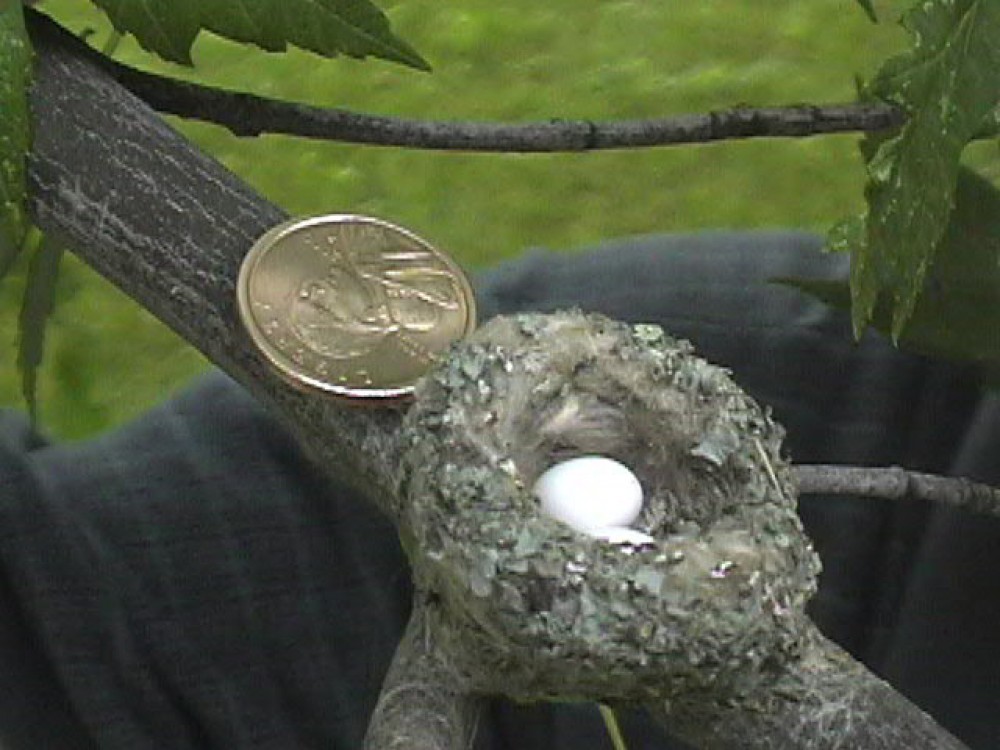
In May, hummingbirds are arriving in the northernmost parts of their vast breeding range. Females are building nests and laying eggs. Males are busy protecting the territory's food sources, chasing away competitors. He makes sure there will be enough food for his growing family.
Photo by Dorothy Edgington
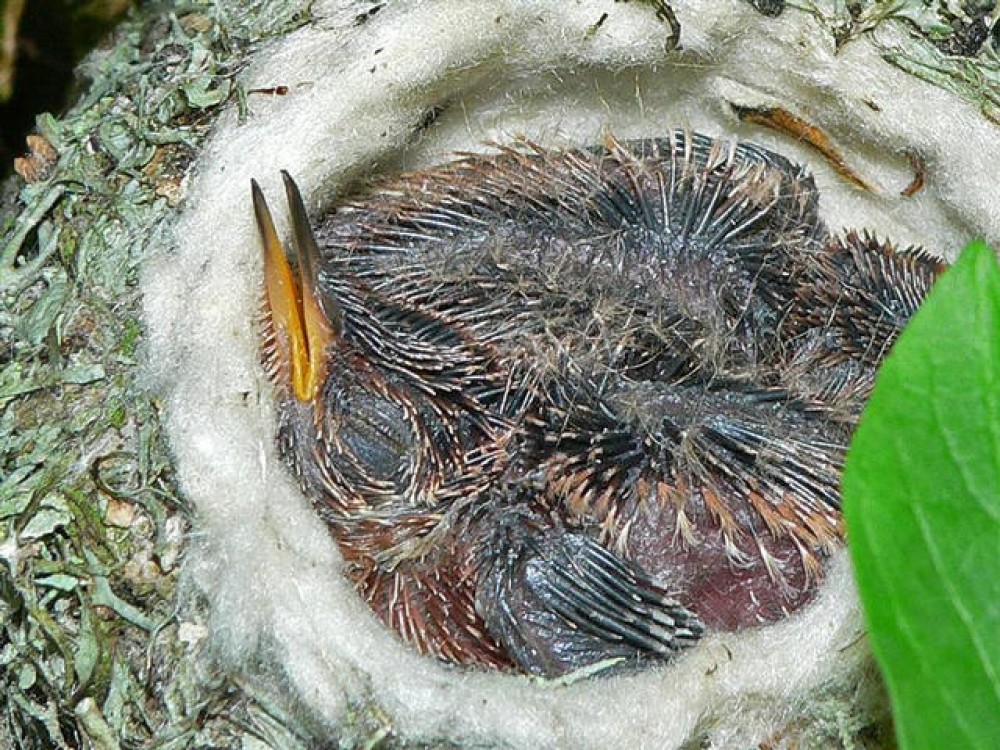
In June, a female hummingbird is busy in the nest. She does it all: lays eggs, incubates them, and broods the babies. The chicks grow inside the egg for 12-14 days before hatching. They are born naked and have eyes closed until about 9 days of age. At 16 days they are 8 times bigger than when they were born. Finally, they fly out of the nest at 21 or 22 days of age. A female may raise two or even three broods in a summer.
Photo by V. Stuve

July is busy on the breeding grounds. Females are feeding their growing babies. Until they fledge they are completely dependent on their mothers for all their food. Later in July the young have fledged and will follow their mothers to nearby feeders. Meanwhile, males are putting on the fat. Fewer hours of sunlight trigger the urge to migrate as fall approaches. Some males leave as early as mid-July. By leaving first, males are ensuring more insects and nectar available for the babies.
Photo by Michele Polimine
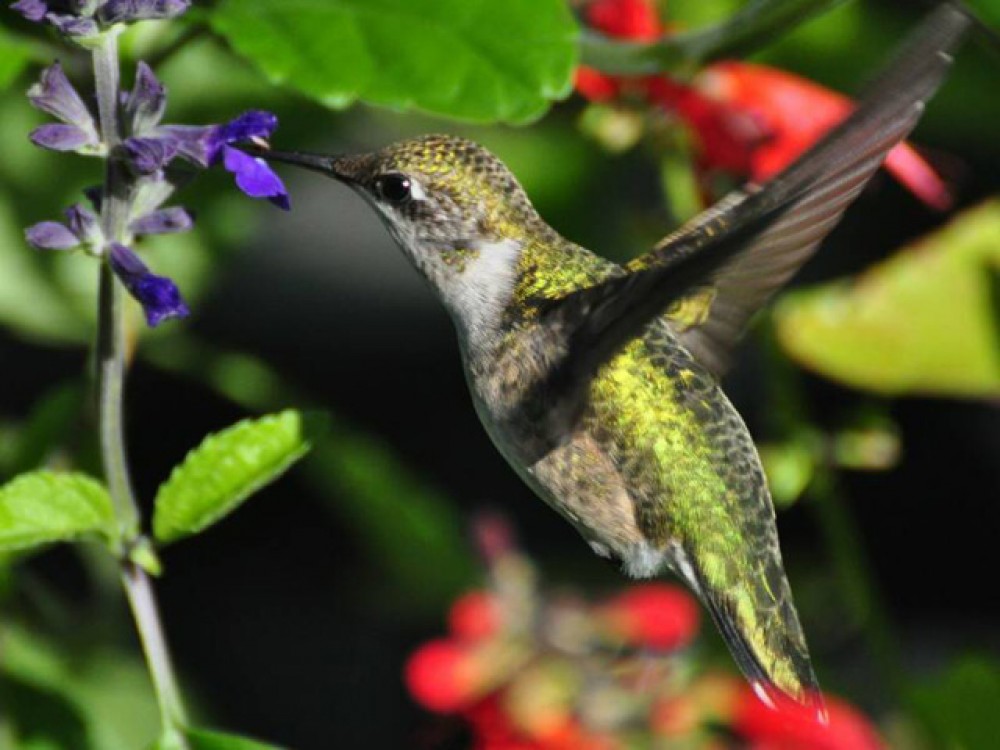
August brings the biggest push south, and hummingbirds are gathering in huge numbers along the Gulf of Mexico. Males arrive there first followed by females and juveniles. Despite this being their first migration, juveniles do not migrate with a parent. By late August, you may only see females and juveniles at your feeders.
Photo by Harlen Aschen
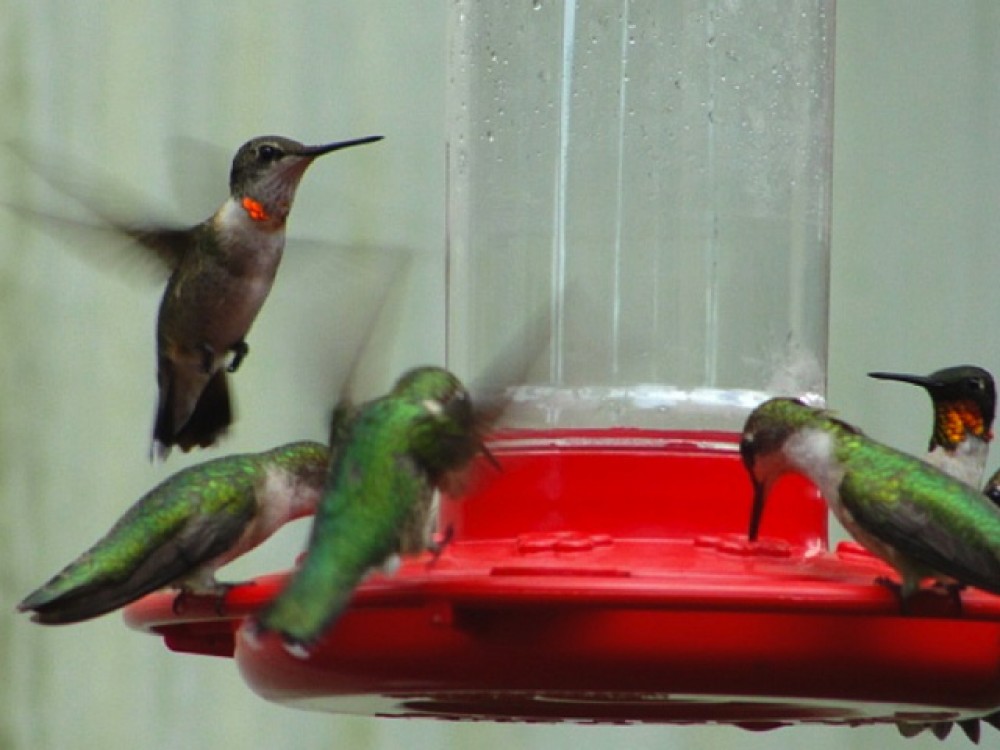
In September, adults are still arriving at the Gulf Coast. Breeding activity may still be happening in Southern Ontario, where eggs may be laid until the first week of September. By mid-September, the hummingbirds you are seeing are likely migrants on the move, not your familiar summer residents. Keep your feeders up at least two weeks after you've seen your last hummingbird. Stragglers or young juveniles may need more time to grow before leaving.
Photo by Harlen Aschen
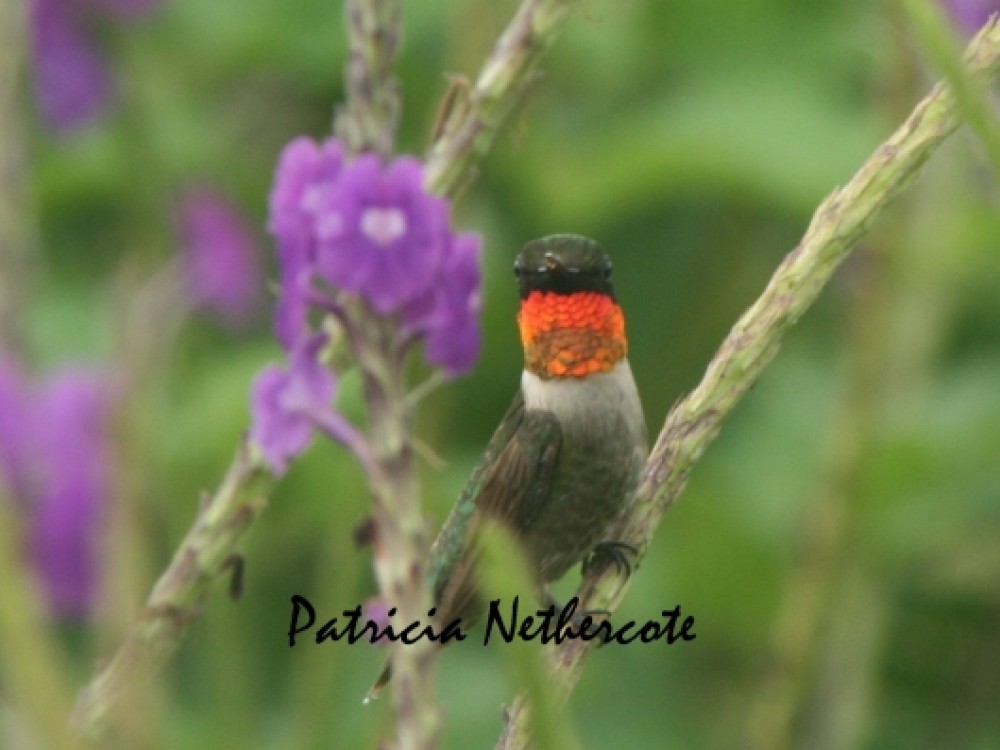
In October, Rubythroats are on their wintering grounds. The birds that traveled by land crossed 4 countries to get there — Mexico, Guatemala, Honduras, and Nicaragua. All of the arrivals from the north now face more competition for food. The birds are molting and getting fresh new feathers. The juveniles are getting to know about life in the tropics. They must adjust to new dangers.
Photo by Patricia Nethercote
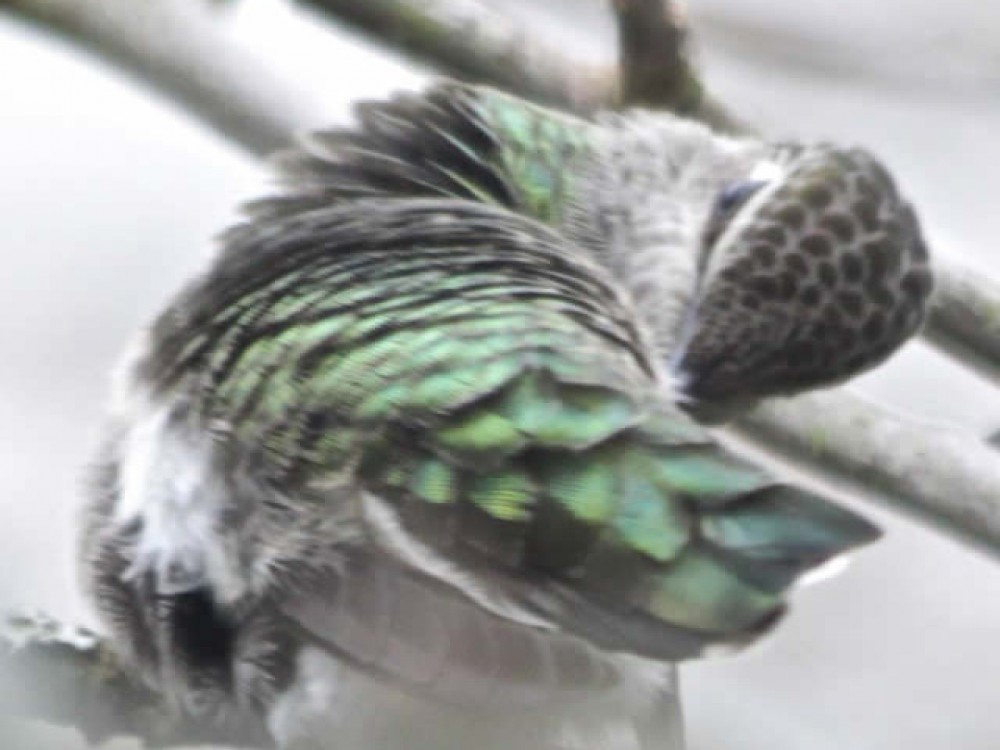
In November, on the wintering grounds, all Ruby-throated hummingbirds are replacing their flight and body feathers, including wing feathers. They will need fresh ones before migrating north. Feathers are a bird's most important flight gear. The birds stop to preen several times a day. Preening helps keep the feathers clean and aligned, making the bird's wings more efficient and body aerodynamic.
Photo by John Doerper
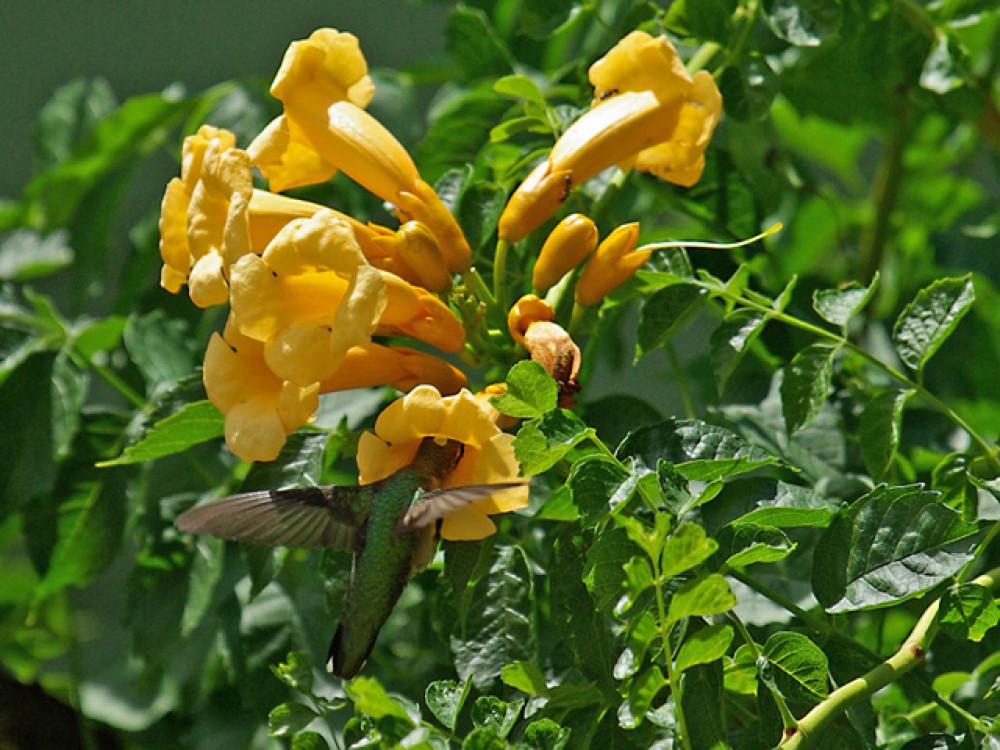
In December, hummingbirds on the lush, tropical wintering grounds are focused on feeding and completing their molt. Growing new feathers uses lots of calories, and the tiny hummers need to bulk up again. Meanwhile, outliers are hummingbirds that decided to stay along the Gulf coast each winter instead of continuing to Central America, and there are always a few hummers that stay up north. Another small population winters in the Outer Banks of North Carolina.
Photo by Bud Hensley


